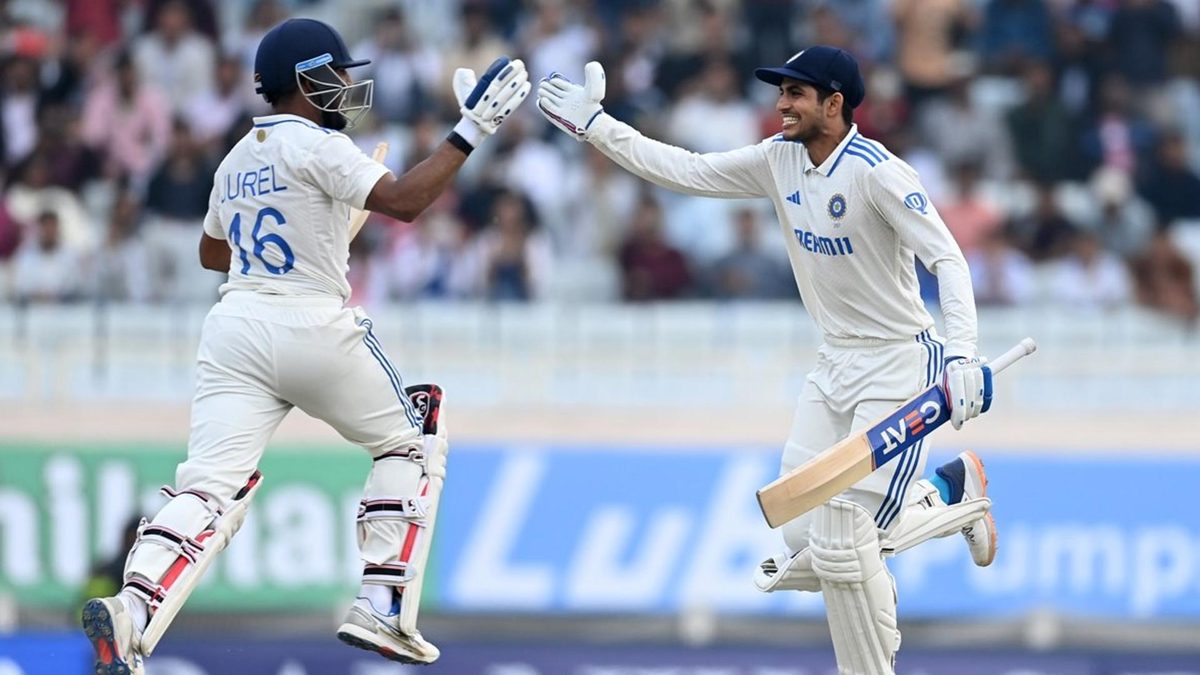
The odds were stacked against India at Ranchi, but they found a new hero at every corner to emergent triumphant, writes Abhishek Mukherjee.
Subscribe to the Wisden Cricket YouTube channel for post-match analysis, player interviews, and much more.
There was no Virat Kohli, Mohammed Shami, or KL Rahul for India. Then, 2-1 up in the series, they took a bold move. – to manage Jasprit Bumrah’s workload. They rested him for the fourth Test match, at Ranchi, at a point when England could not only have drawn, but even won the series.
Let us assess the XI. Coming into the series, Shubman Gill had been out of form in Test cricket. For all his heroics, Yashasvi Jaiswal was not a Test cricketer before the current WTC cycle. Rajat Patidar, Sarfaraz Khan, and Dhruv Jurel all debuted during this series. And at Ranchi, India replaced Bumrah – one of the greatest fast bowlers of all time – with a debutant, Akash Deep.
R Ashwin was yet to have a defining spell in the series. Ravindra Jadeja had one, but that was while defending a humongous target at Rajkot. Axar Patel had to be dropped after two games. Kuldeep Yadav was playing his 11th Test match.
Then, on a surface that raised concerns even before a ball had been bowled, Ben Stokes won the toss. What chances did India have?
But the heroes kept showing up. Deep, who had won many a battle in life to break through en route to a Test cap, bowled Zak Crawley early in the first morning, only for the tell-tale hooter to indicate a no-ball. Unperturbed, he took out England’s top three – including Crawley, bowled – in the space of ten balls.
England went to lunch at 112-5. India had reasons to be jubilant – but also not, for the early indications of variable bounce had started to show. The ball from Jadeja that got Stokes virtually crept along the ground. Things were definitely going to get worse from there.
At this point, Joe Root stepped up with a masterful hundred. Mohammed Siraj stuck to his captain’s plan by getting the obdurate Ben Foakes, and produced a near-unplayable ball to get Tom Hartley. But Root found an ally in Ollie Robinson. By stumps, England were 302-7. Next morning, 347-7. The partnership had swelled to 102. Robinson had got his maiden Test fifty.
But just when 400 seemed inevitable, Jadeja rounded the innings off with three wickets in eleven balls. Still, 353 was a big score on a pitch with dubious bounce.
By now in this series, Jaiswal is almost expected to score runs, and the 73 was perhaps predictable. But as Shoaib Bashir and Tom Hartley found their rhythm, the India batters perished one by one, and were left reeling at 177-7.
At Rajkot, India had used Kuldeep as the night-watch in both innings. He had batted until stumps on both occasions and, as a result, had batted on all four days. Here, he stepped out at No.9 and kept out 131 balls, the second-most for India in the innings. He made 28, but he also helped Jurel put on 76 for the eighth wicket, and played a part in tiring out Bashir and Hartley, who had to resume a little over four hours after they were done bowling in the first innings.
Jurel, of course, was another thing. His Test debut, at Rajkot, was his 16th first-class match. If one ignores the 249 against Nagaland, one of the weaker sides in the Indian domestic circuit, this was the first time he reached 90 in any professional cricket. There was little in his career that suggested that he would read the pitch, absorb the pressure, play his shots with such authority – but he did, and he kept England’s lead to 46.
Ashwin, India’s five-hundred-wicket-man, now sprung into action, first with a double-strike in the fifth over, then by taking out Root. Crawley pushed England to 110-3 – the lead was 156 at this point – but now Kuldeep not only joined forces with Ashwin but established himself as the destroyed. Another 35 runs, and England were done. At the end of the day’s play, Ashwin (5-51) was not being unnecessarily generous when he admitted to “stealing” Kuldeep’s (4-22) five-for.
It was a job well done, but India needed to get those 192 runs. It was at this point that Rohit Sharma assumed his World Cup 2023 avatar. The mid-on was up, there were vast acres open in the mid-wicket area – just like the powerplay overs in the ODIs. When Hartley tossed them up, Rohit drove to the mid-wicket fence. By stumps, India were 40-0; Rohit, 24. By the next morning, they had stretched it to 84-0.
But the course of the match changed again as India slumped to 120-5. Rohit had made 55, his highest fourth-innings score, but it had not been enough. India were still 72 away when Jurel joined Gill.
Gill had come into the Test match with a hundred at Visakhapatnam and 91 at Rajkot, both in India’s second innings, to finally establish his Test match credentials on home soil. Yet, the fans waited for that one defining show in the format since the 91 at Brisbane in his debut series.
This was that innings. As wickets fell around him, Gill held his calm, curbing his natural strokemaking instinct, eschewing anything remotely risky to go boundaryless for 119 balls before winning the endgame and getting to his fifty. Matching Gill was Jurel, responding and running singles to finish unbeaten on 39.
India began the Test match with the odds stacked against them, and were virtually buried two days into the Test match. But they found heroes at every juncture, and emerged triumphant to extend their streak at home to 17 series wins.








